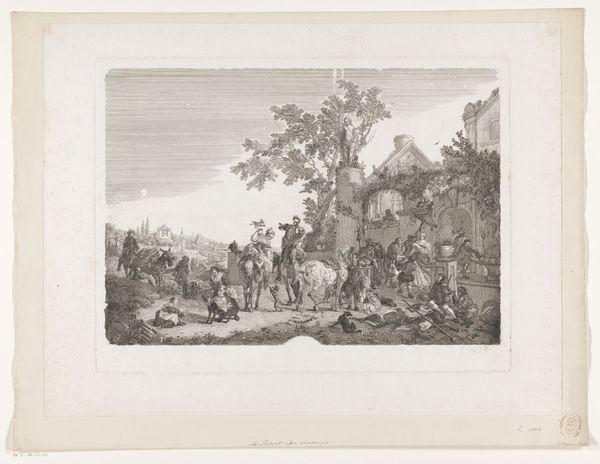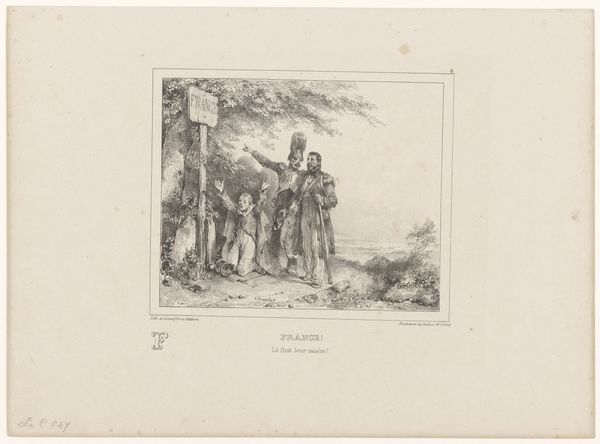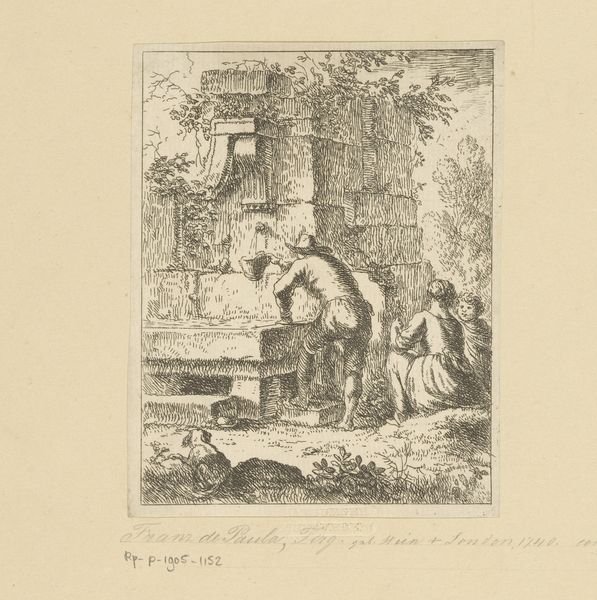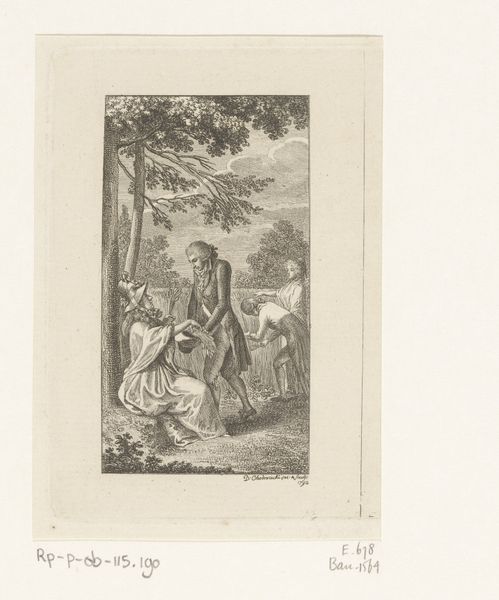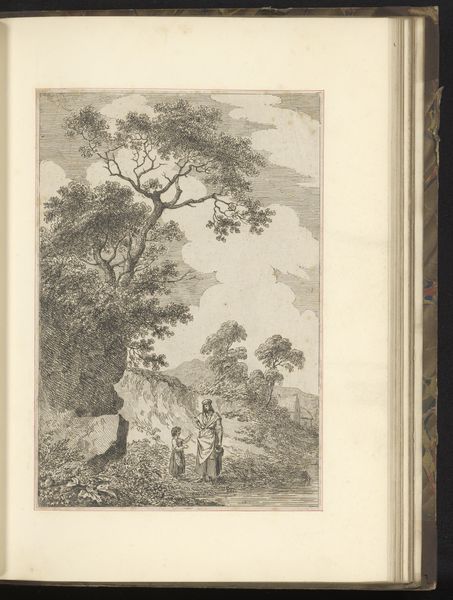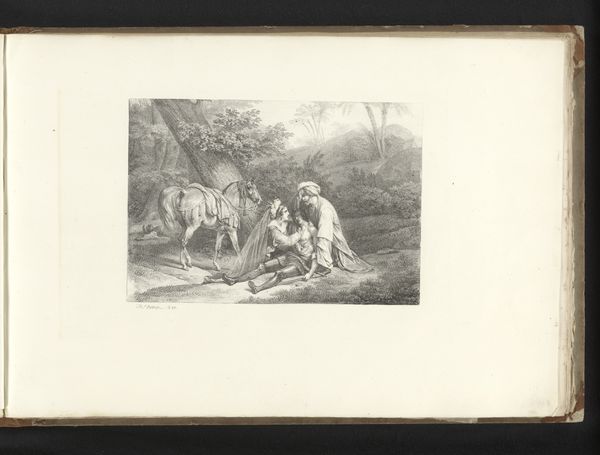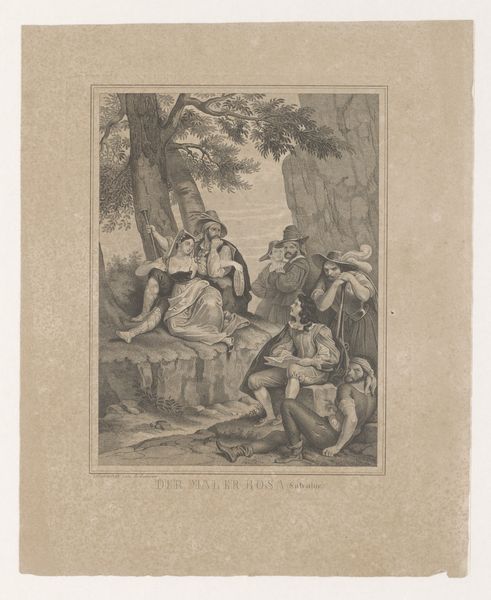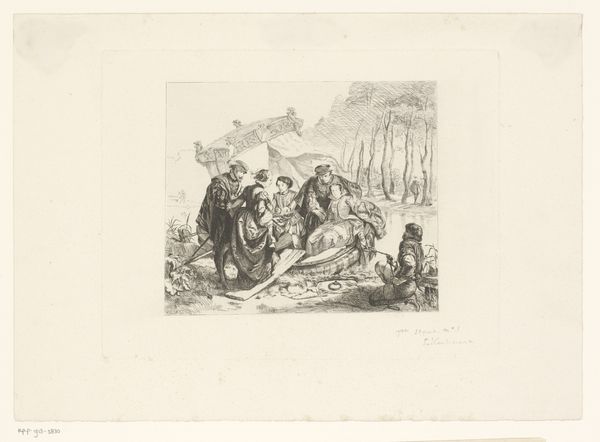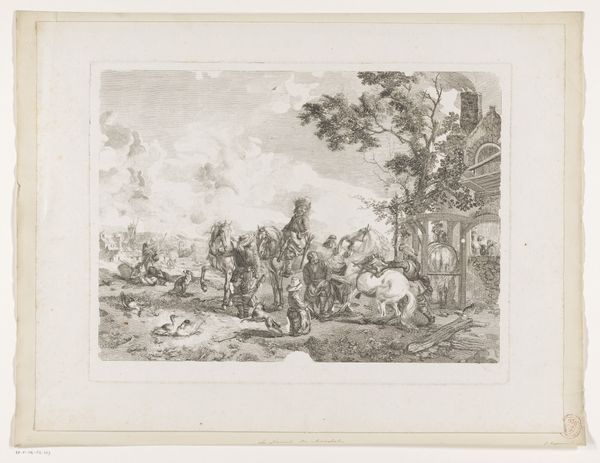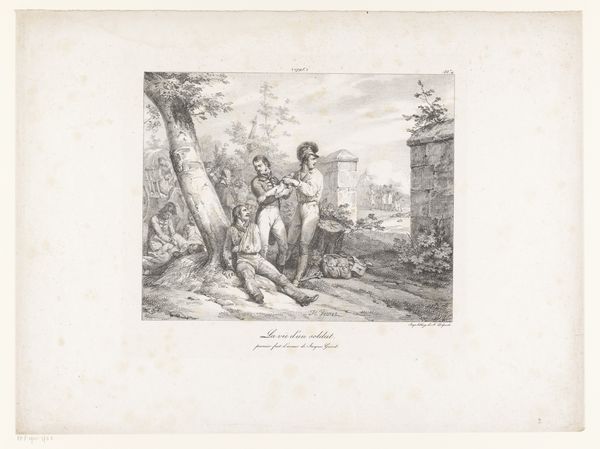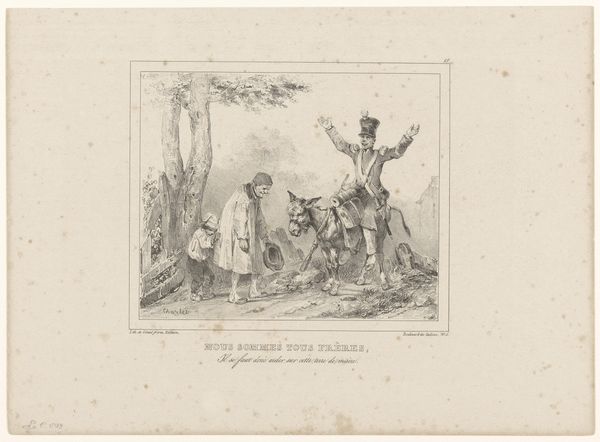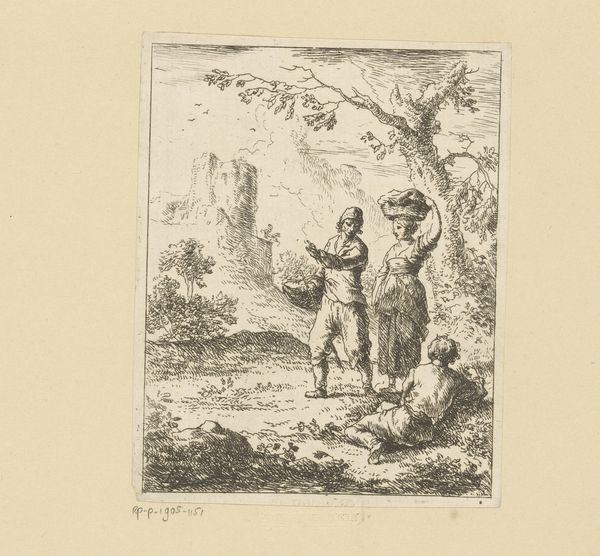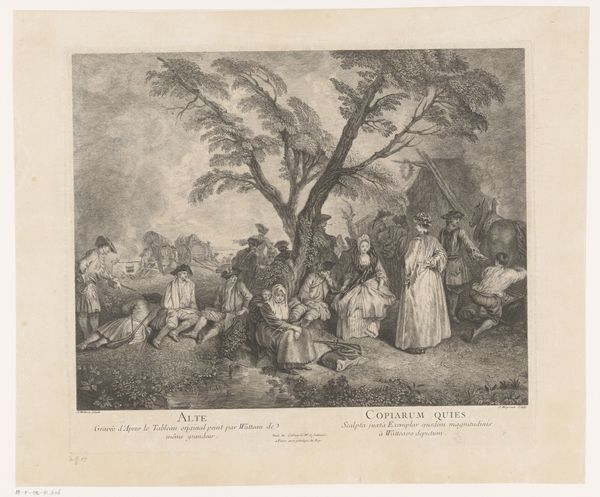
etching
#
baroque
#
etching
#
landscape
#
figuration
#
genre-painting
Dimensions: height 104 mm, width 82 mm
Copyright: Rijks Museum: Open Domain
Curator: What immediately strikes me about this etching is its dreamlike quality, almost like a half-remembered myth unfolding under the dappled shade of ancient trees. Editor: This is Franz de Paula Ferg’s “Three Herdsmen Resting in a Landscape with Ruins,” likely made sometime between 1699 and 1740. As an etching, the method is intaglio—acid eats away at the exposed lines of the metal plate, usually copper, which then holds the ink. Consider the labor here: the precise, repetitive action of drawing lines that accumulate into forms and shading, the corrosive process carefully monitored. Curator: Yes, and those lines! They feel almost frenetic, a whirlwind of detail that coalesces into these figures, this ruined tower in the background… it suggests a transience, doesn't it? Even ruins eventually crumble, and herdsmen, however idyllic they seem, must move on. It speaks of a world always in flux. Editor: These figures, positioned within what seems like an Italianate landscape with classical ruins, certainly points toward trends of the Baroque era: landscape painting and genre-painting becoming increasingly marketable categories, affordable for collectors to consume at will. Curator: It is fascinating how a work intended for mass consumption, like this etching, can still whisper so intimately. Look at the herdsman lounging in the tree – he's so nonchalant, so completely at peace. There is a silent narrative, an unstated story. I find myself imagining their lives, their thoughts… were they satisfied? Or yearning for something more? Editor: And those stories were told in multiples, literally; one matrix yielding several consumable pieces of art that connected social context and its representational making visible in landscape with workers and idlers, pastoral tropes, printed en masse on a specialized press. Curator: You’re right; the means of production informs our perception. It reframes this moment. Yet still, that serene face amidst the carefully etched lines... it lingers. Editor: Exactly; so too is the intersectionality: both luxury good and mass media. A moment, certainly. The means to produce a timeless consumable piece of history for burgeoning collectors. Curator: Thinking of Ferg’s world and ours... these whispers become our shared conversation now. Editor: And each impression— both literally, as each image leaves the press, and metaphorically, in how it imprints on the viewer's eye—contributes to the complex tapestry of art history and its social world.
Comments
No comments
Be the first to comment and join the conversation on the ultimate creative platform.
